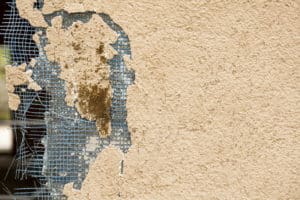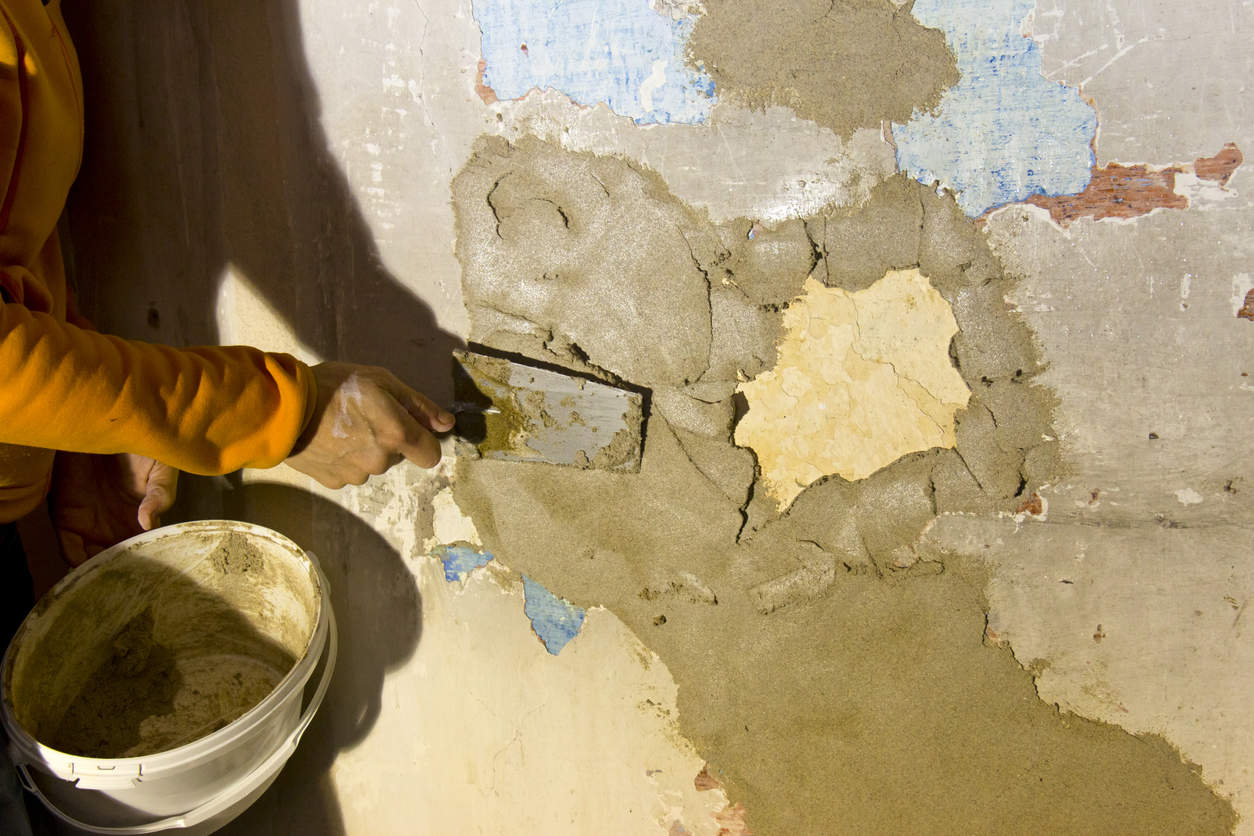Stucco is a widely used material for exterior and interior surfaces and is a favourite of homeowners and business owners alike. It has the appearance of pricey stone and can be applied directly onto walls to create a smooth, masonry-like surface. Stucco starts as a dry mix of Portland cement and fine sand. Then, when combined with a few additional ingredients such as lime or calcium aluminate cement, it improves workability, adhesion, and water resistance.
Benefits of Stucco
Stucco isn’t popular because of expensive marketing campaigns or relevance in the world of pop culture: it’s popular because it’s beautiful, versatile, durable and offers a wide range of benefits to property owners.
Stucco can be designed for any pattern you like, and you can employ an artisan to create attractive stonework and custom designs for you. The rustic look of stucco makes Tuscan or Spanish styles especially attractive. Many luxury homes are now constructed with stucco because it makes the exterior exceptionally beautiful. On top of looking great, stucco will protect your property from weathering, water damage, fire damage, mould growth, and other common structural problems.
Unfortunately, stucco isn’t infallible and can become damaged over time, especially in climates with extreme weather systems. It’s possible that over time, cracks and blemishes will start to develop. When cracks begin to appear, the benefits mentioned earlier are put at risk because the integrity of the stucco has become compromised. But how can you tell when a stucco crack is ok compared to when you need to call a contractor for professional stucco repair? Keep reading to find out!

Stucco Cracks
When stucco first goes up on your house, cracks may appear as the structure settles into place. As time goes by, those cracks may grow larger as more movement occurs in the underlying structural elements of the house. These regular movements may occur because of ground settlement, weather changes, seasonal temperature changes, or your house’s age.
While not usually a structural concern, cracks can cause problems with moisture penetration and damage the home’s interior surfaces. For example, water intrusion may cause mortar joints to deteriorate, resulting in loose stones around windows and doors, causing deterioration of surrounding areas by moisture seepage. A professional stucco contractor should have experience repairing cracks using several methods, including applying thin unique plaster coats over them or filling them with additional stucco material mixed onsite or pre-mixed. Here is when you should consider stucco repair:
1) When they appear immediately after installation.
Most of the time, cracks appear in stucco due to poor installation techniques. If you notice cracks right after your stucco has been installed, get your stucco contractors on the line for quick stucco repair before more serious problems have a chance to develop.
2) When they move or crumble.
This is when there is movement in either the house’s structure or the stucco itself. Investigate by looking for deep cracks that run along expansion joints in your home, which may be caused by shifts in the foundation of your house.
3) When you start seeing hairline cracks on ceilings or interior walls.
Hairline cracks on the interior of your building are likely due to water damage or moisture intrusion from outside sources through an already existing crack. Investigate by looking closely at exterior walls for any signs of water penetration.
4) If all holes are not filled during installation.
A professional contractor should attempt to fill all gaps and holes during installation; however, it’s always possible that some get overlooked.
5) When children or pets climb on your home’s exterior.
If not taken care of immediately, it will lead to more severe damage in the future. Investigate by looking for any signs of movement or cracks out of the ordinary and more extensive than a standard crack size.
6) When you see mould inside your home near stucco surfaces.
Mould is indicative of water problems behind your walls from moisture intrusion through an existing crack.
7) When you notice a loss of adhesion due to insufficient thickness/depth at the time of original application.
In many cases, if sufficient layering was not achieved during installation, a professional contractor can dig down and apply a second layer over the existing stucco.
8) When you notice that the stucco is starting to break away from your home’s surface.
This may be caused by moisture intrusion or lack of proper stabilization before application. Investigate by looking for cracks along with the corners of your house, especially where brick meets the stucco.
9) If cracks follow mortar joints in your walls.
An experienced professional contractor should be able to identify this problem and most likely recommend removing all loose mortar and stabilizing with a portland cement-based material only after the expanded polystyrene insulation has been removed. The EPS must be removed because removing the old mortar could cause it to fall on top of the insulation, which, when exposed to heat, would create a significant fire hazard.
10) If you notice cracks in your stucco, but none of these apply to your situation.
Sometimes, finding a crack is all you need to see to call for professional stucco repair. Finding cracks and gaps, especially big ones, means you should immediately contact a professional stucco contractor to inspect the damage. They can provide an expert opinion on how they should be repaired and look for signs of intrusion so moisture problems do not occur in the future.
Summary
Repairing stucco cracks is something that should be done as soon as the problem becomes visible to you. By delaying, you risk attracting mould and mildew, damage from rain seeping into your home, animal infestation, and a host of other problems. Additionally, if the reason for the crack in your stucco is because there was a gap or void left during installation, it will only get worse over time as the material continues to break down. A professional contractor can evaluate your situation and devise a plan to fix all existing cracks so they never become bigger or more numerous. If you’re in need of stucco repairs, click the following to check out the website of a certified stucco contractor: magnumstucco.com.

